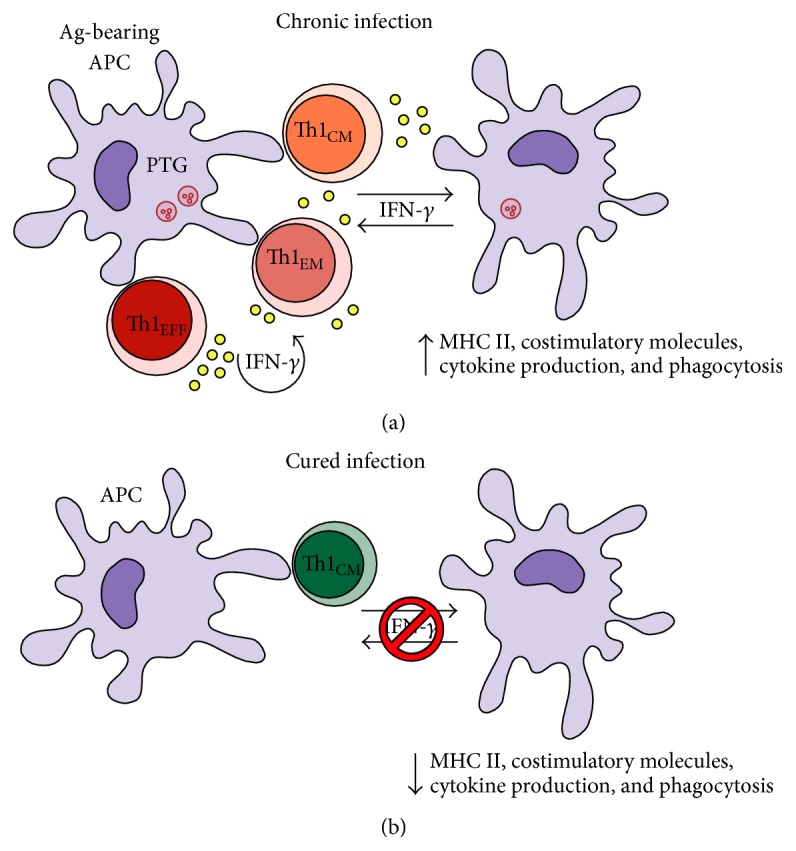Figure 1.

Schematic illustration to explain the IFN-γ priming effects on APCs and Th1EFF/Th1EM cells during chronic infections. This figure explains how IFN-γ produced by Th1EM cells act on APCs (usually DCs) and directly on CD4+ T cells during chronic infections. (a) When the pathogen is still present, antigen- (Ag-) bearing APCs activate CD4+ T cells that produce small amounts of IFN-γ. These small amounts of IFN-γ are enough to maintain APCs poised for function, for example, phagocytosis, cytokine production, and antigen presentation. At the same time, IFN-γ acts directly on CD4+ T cells and maintains the pool of Th1EFF/Th1EM cells. Both effects culminate in enhanced immune system activation, cytokine production, and pathogen clearance. (b) After complete pathogen elimination, the IFN-γ priming on APCs and Th1EFF/Th1EM cells ceases and, in consequence, these effector populations rapidly decline. The remaining Th1CM cells are important to control a secondary infection. However, in some infectious diseases such as malaria, continuous IFN-γ priming, and persistence of Th1EFF/Th1EM cells seem to be required to protect against reinfection.
